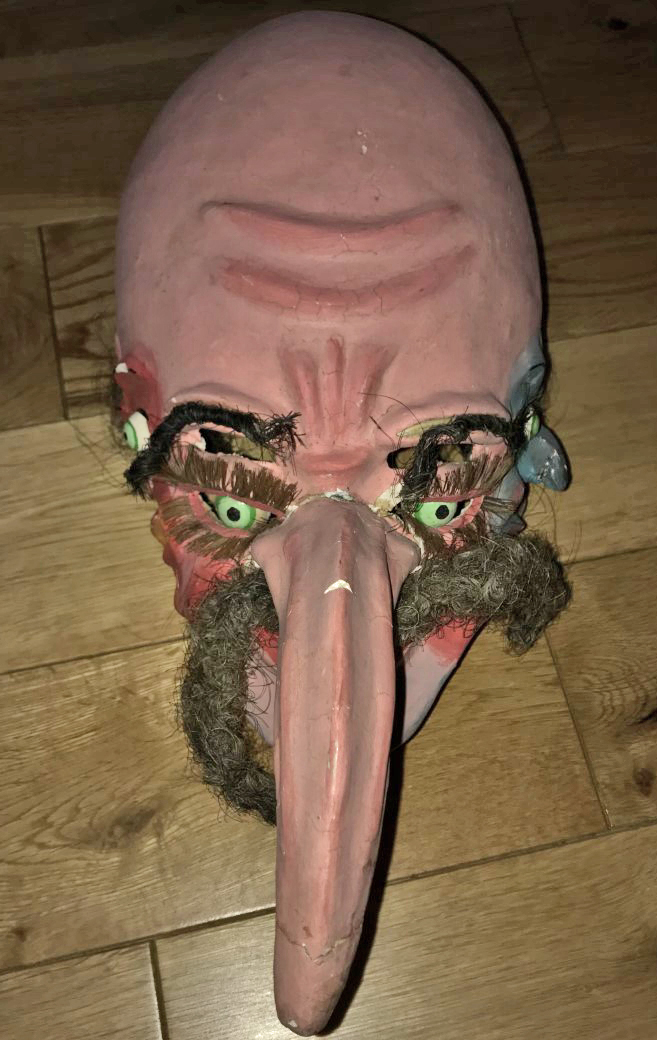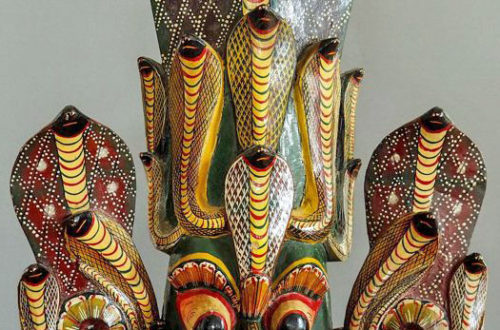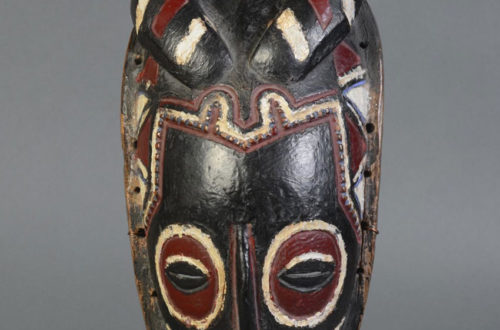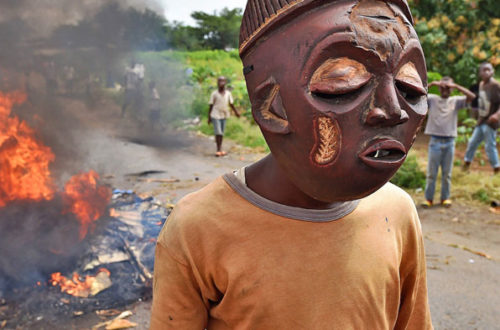 Q: I was gifted this mask by an eldrly friend a while ago and it has been in the attic ever since. She brought this mask, along with a a few others of similar nature, from Morocco in the 1960s/1970s to the UK. The only thing I could potentially pin this mask to is the Boujloud Festival in Morocco, but cannot find anything else to identify them. They are made form plaster/clay & are big enough to put over an adult head (14in x 8in). It also appears that thread was used to attach components such as eyes and hair. I also have another mask of the same style but the paint is glossy rather than matt. It is of better condition than one pictured. Casper, 1712
Q: I was gifted this mask by an eldrly friend a while ago and it has been in the attic ever since. She brought this mask, along with a a few others of similar nature, from Morocco in the 1960s/1970s to the UK. The only thing I could potentially pin this mask to is the Boujloud Festival in Morocco, but cannot find anything else to identify them. They are made form plaster/clay & are big enough to put over an adult head (14in x 8in). It also appears that thread was used to attach components such as eyes and hair. I also have another mask of the same style but the paint is glossy rather than matt. It is of better condition than one pictured. Casper, 1712
A: It was obvious that your interesting mask came from Bolivia, so I sent the pictures to Aaron Fellmeth at Second Face. He was kind enough to share the following…
That’s a relatively rare mask known as Wapuri (also spelled Waphuri). It is used in the Kullawada dance, usually worn with a tall hat made of beads, rhinestones, fake pearls, etc. The Kullawada supposedly originated among the Aymara people living around Lake Titicaca and made its way to La Paz, and represents a dance of textile makers, who carry little spindles as they dance. Both men and women dance, directed by the Wapuri. The Wapuri carries a staff and screams “Wapuri” whenever he wishes the dancers to change their choreography. The reason the mask is rare is that, unlike diablos and jukumari, where a dance team wears dozens of masks, there is only one Wapuri per team. For your Spanish-speaking audience, here’s a link to a really nice video about it: https://www.youtube.com/watch?v=ypEieHF4tos If that specific mask is for sale, I’d be willing to buy it for the Museum. A






